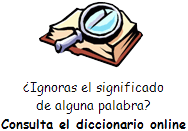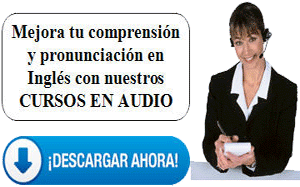Body Language Can Help With Public
Speaking
Today, we return to the subject of successful public speaking centering
on the physical message of presentation.
Some call this body language. Charles LeBeau is a professor of public
speaking and has written several books about how to do it well.
Mr. LeBeau tells VOA that body language includes posture, eye contact
and gestures - how you move your hands or arms.
“For the physical message, a lot of non-native presenters are going to
have problems with posture, and eye contact, and gestures. I think a lot
of this comes from nervousness.
"Not only are they nervous because they’re doing a presentation, but in
addition to that they’re really nervous because of their English, and
their lack of confidence, lack of experience in their English, they’re
trying to figure out the grammar, what I want to say, and they’re having
all kinds of difficulty doing that, and also controlling their body.”
We have all seen nervous presenters in classrooms and meetings. One
effect of being nervous is moving from side to side. A presenter does
not need to stand perfectly still. In fact an audience can lose interest
in a speaker who does not move.
How a speaker moves is important. Whole-body movement should be slow and
planned to command attention. Such movement helps to communicate
confidence.
New public speakers know that they should look at the audience while
they speak. But they look at their notes on a paper or at the screen if
they have an electronic presentation.
“With posture, the typical problem that I see is that they are often
moving back and forth, and they’re not facing the audience. They’ll
often be facing the white board or the screen with slides and be talking
to that rather than talking to the audience.
"Same thing with eye contact – they find it really, really difficult -
some of them find it really difficult - making eye contact with the
audience, because they’ll be looking at their notes, they’ll be looking
at their computer, they’ll be looking at the screen, they will be
looking at the floor. The problem of having notes, and trying to talk
from notes , often is a big problem. So they have trouble with eye
contact.”
Charles LeBeau says the best way to avoid this problem is to use images
and few words for notes instead of sentences. The image should help
communicate the point you want to make. Writing a few words with the
image on your slide helps you remember that point. Then you can look at
the audience while speaking.
“Another problem I’ve noticed is oftentimes there’ll be a lot of
sentences or words on the slides and no images. So I think the key is if
they can figure out what images to use that will communicate their
message, because the images will communicate faster and more clearly
than words.”
Holding on to notes also makes it more difficult for a speaker to
gesture naturally. Mr. LeBeau’s book, “Speaking of Speech,” discusses
this. He says gestures should support the point the speaker is making.
For example, when talking about three ideas, hold up three fingers to
introduce them. Then hold up one finger while explaining the first idea,
two fingers for the second, and so on.
Other experts advise moving your body to a different place for each
idea. Stay in place until you finish making that point. Then move to the
next place on the stage or in the room.
Mr. LeBeau says a good way to change your body language is to make a
video of your presentation and watch yourself. This helps you to become
aware of what you need to change.
“I find often times, the gestures don’t look natural. They are poorly
delivered, or they are just nonexistent. Students can video themselves,
and then look at it, they can clearly see: “Oh, My! I had no idea that I
looked like that! My posture! I’m moving all over the place. Look at my
hips. It’s going back and forth and back and forth.
"And my eye contact! All of these other goofy things that I’m doing
without noticing it, or thinking that ‘well, it’s not such a big deal.’
But if I can see it I can realize oh, ‘ok, I see, I see, I see what I’m
doing.’ I think that helps them change more quickly. So they can do
their presentation again, and work on changing, then they can compare,
and they can see that they can make quick improvement.”
An important part of public speaking is practice. When you practice
remember these important tips: Be aware of your posture, eye contact,
and gestures. Record yourself using a phone, tablet, or camera. Watch
yourself and plan what you will do to improve.
Look for opportunities to speak and gain more confidence. Mr. LeBeau
says his students find the physical message the easiest thing to change
in order to become a better presenter.
“The first thing that we deal with is the physical message. And the
reason we do that is so students can have a real positive experience
really quickly. You know, I looked like this in the beginning and now,
after one day, or a couple of classes, now I look like this - I do look
much better!
"I think it helps them feel more positive about the experience. It helps
them see that ‘yes, I can do this, I can look confident.’ So, I think
that it’s the easiest to change, and maybe the most important thing to
deal with first.”
In our next Speaking Tips, we will look at the visual message, the
visual aids you show the audience, and the story message, how to
organize the ideas you present. |
![]() ).
Utiliza el botón derecho del ratón y "guardar enlace" para descargar el
fichero a tu PC, tablet, Smartphone, etc.
).
Utiliza el botón derecho del ratón y "guardar enlace" para descargar el
fichero a tu PC, tablet, Smartphone, etc.![]() Escucha el audio
Escucha el audio



